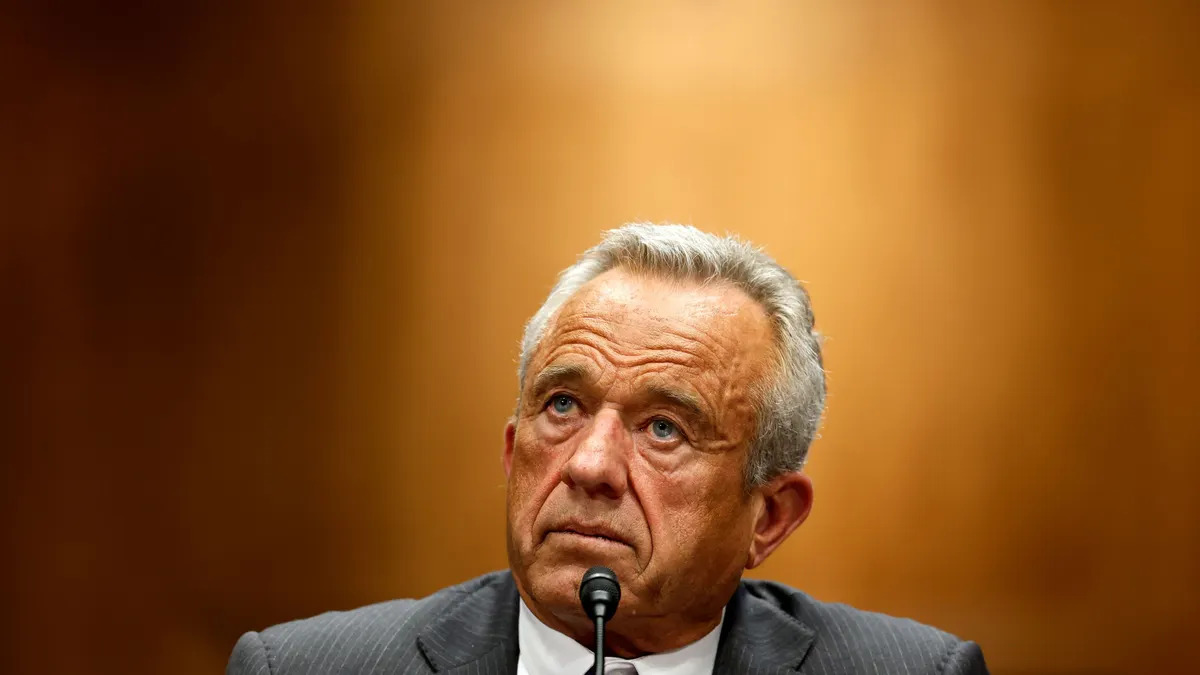Dive Brief:
- More than 600 certified nurse midwives and certified registered nurse anesthetists employed by Kaiser Permanente held a one-day strike at two facilities in Northern California on Monday.
- A Kaiser spokesperson said Monday morning that the hospitals would remain open through the strike, however that some appointments and surgeries had been postponed due to the work stoppage.
- The workers’ union, the United Nurses Associations of California/Union of Health Care Professionals, says they want a contract that addresses staffing and burnout concerns. The two parties have conducted lengthy negotiations. Kaiser called the action “disappointing,” given the parties are scheduled to hold multiple bargaining sessions this month.
Dive Insight:
The striking workers picketed in front of Kaiser’s Oakland and Roseville medical centers on Monday, according to the nonprofit medical provider. They were joined by approximately 700 other Kaiser workers who held a sympathy strike, meaning they were not scheduled to work but joined in solidarity.
The union said workers are striking to secure more staff to meet patient demand, higher wages and benefits protections, including access to healthcare. If they secure a contract, it will be their first with Kaiser.
“We’ve had operating rooms sit empty because there weren’t enough nurse anesthetists to cover cases,” said Jeff Cathcart, a certified nurse anesthetist who works at Kaiser Permanente in San Francisco, in a media statement. “That directly impacts patient access to care.”
Kaiser said the strike was unnecessary because the union and health system have future bargaining sessions on the books.
The health system also disputed that it suffered staffing shortages, saying its staffing levels meet or exceed nurse-to-patient ratios and workforce standards mandated by California law. Kaiser said it also continued to hire more workers last year, growing its frontline workforce by 4,695 workers, including 1,684 employees in union-represented roles.
“We’re confident that we’ll address key issues and reach an agreement that supports the needs of our employees and affordability for our members and reinforces Kaiser Permanente as a best place to work and receive care,” a Kaiser spokesperson said.
Kaiser is no stranger to strikes. The health system weathered a six-month work stoppage earlier this year among 2,400 of its mental health workers in Southern California. In 2023, more than 75,000 workers walked off the job in pursuit of higher pay. And approximately 2,000 mental health workers in Northern California waged a 10-week strike in 2022.
Strikes may also be the cost of doing business as a highly unionized workplace. Nearly 80% percent of Kaiser’s workplace is unionized, making it the largest union-represented healthcare employer in the U.S., according to the health system.
“A strike is a common bargaining tactic meant to raise awareness of the union’s key interests,” a Kaiser spokesperson said.
Across the country, healthcare strikes are occurring at higher rates than in years past, according to John August, the Scheinman Institute’s director of healthcare and partner programs.
August has studied healthcare and labor relations for 40 years and tracked the frequency of healthcare work stoppages since 2020. Although strike activity declined last year compared to its post-pandemic peak, workers are still using strikes more often than they were a decade ago to push for change, he said.
For example, workers at Rhode Island-based Butler Hospital staged a three-month strike in pursuit of wage increases this summer that forced the facility to close roughly half its beds.
The strike is evidence that, although there is “substantial acrimony and conflict” in healthcare labor relations, work stoppages can be effective, August said. Workers have more power in the face of persistent labor shortages than they did in years past, and they have a stronger desire for action as they confront lingering inflation and stagnant wage growth.
“Healthcare workers’ leverage remains strong due to workforce shortages [and] public mistrust of... larger and larger health systems,” August said.













